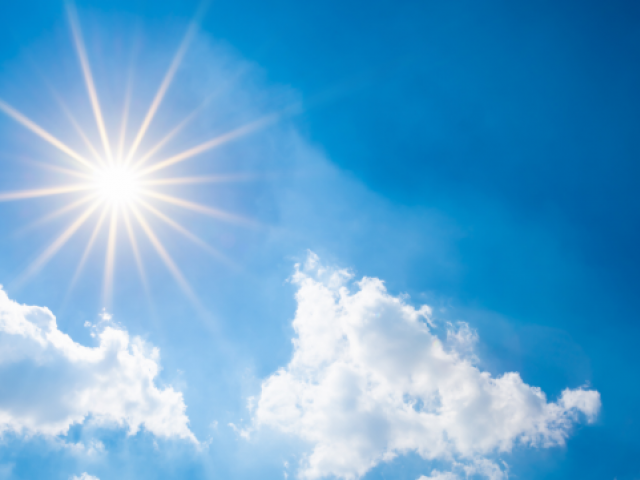
With temperatures expected to reach the 90s this weekend, Schenectady County has released a list of cooling stations residents can use during the heatwave.
“Temperatures are expected to be in the 90s this weekend, which can pose a public health risk for anyone who doesn’t have a place to stay cool,” said Schenectady County Legislator Michelle Ostrelich, Chair of the Health, Housing & Human Services Committee. “Visit any of our open branch libraries if you need a place to cool off during the hottest hours of the day and remember to drink plenty of water and stay out of the sun, in a cool or air-conditioned room if possible.”
The following cooling stations will be open:
Hon. Karen B. Johnson (Central) Library Branch
10am-5pm on Saturday, May 21
12-4pm on Sunday, May 22
99 Clinton St.
Schenectady, NY 12305
Bethesda House of Schenectady
10am-4pm on Saturday, May 21
10am-4pm on Sunday, May 22
834 State Street
Schenectady, NY 12307
Bornt Library Branch
10am-5pm on Saturday, May 21
948 State St.
Schenectady, NY 12307
Glenville Library Branch
10am-5pm on Saturday, May 21
20 Glenridge Rd.
Schenectady, NY 12302
Mont Pleasant Library Branch
10am-5pm on Thursday, August 12
1036 Crane St.
Schenectady, NY 12303
Rotterdam Library Branch
10am-5pm on Saturday, May 21
1100 N. Westcott Rd.
Schenectady, NY 12306
Tips to Beat the Heat
- If possible, stay out of the sun. When in the sun, wear sunscreen (at least SPF 15) and a hat to protect your face and head.
- Use an air conditioner if you have one. Set the thermostat no higher than 78 degrees.
- If you do not have an air conditioner, keep rooms well-ventilated with open windows and fans. Consider going to one of the designated cooling stations.
- Fans work best at night when they can bring in cooler air from outside.
- Make a special effort to check on your neighbors during a heat wave, especially if they are seniors, young children, and people with special needs. Many older New Yorkers live alone and could suffer unnecessarily in the head because they are isolated from friends and family, especially during the current pandemic.
- Seniors and others who may be sensitive to extreme heat should contact friends, neighbors, or relatives at least twice a day during a heat wave.
- Drink fluids – particularly water – even if you do not feel thirsty. Avoid beverages containing alcohol, caffeine, or high amounts of sugar. People with heart, kidney or liver disease, or fluid-restricted diets should check with their doctor before increasing fluid intake.
- Wear lightweight, light-colored, loose clothing that covers as much of your skin as possible.
- Never leave children, pets, or those who require special care in a parked car during periods of intense summer heat.
- Avoid strenuous activity, especially during the sun’s peak hours – 11am to 4pm. If you must engage in strenuous activity, do it during the coolest part of the day, usually in the morning between 4am and 7am.
- Cool showers or baths may be helpful, but avoid extreme temperature changes. Never take a shower immediately after becoming overheated – extreme temperature changes may make you ill, nauseated, or dizzy.
Seek help if you feel symptoms of heat-related illness:
Heat Cramps
Heat cramps are muscular pains and spasms, usually in the leg or stomach muscles, resulting from heavy exertion during extreme heat. Heat cramps usually occur when the heat index is between 90 and 105 degrees. Although heat cramps are the least severs of all heat-related health problems, they are often the first signal that the body is having trouble coping with the heat and should be treated immediately with rest and fluids. Stretching, gentle massaging of the spasms, or direct, firm pressure on cramps can reduce pain. Seek medical attention if pain is severe or nausea occurs.
Heat Exhaustion
Heat exhaustion occurs when body fluids are lost through heavy sweating due to vigorous exercise or working in a hot, humid place. Blood flow to the skin increases, causing blood flow to vital organs to decrease. Symptoms include: sweating, pale and clammy skin, fatigue, headache, dizziness, shallow breaths, and a weak pulse.
Heat exhaustion should be treated with rest in a cool area, sipping water or electrolyte solutions, applying cool and wet cloths, elevating the feet 12 inches, and further medical treatment in severe cases. If not treated, the victim’s condition may escalate to heat stroke. If the victim does not respond to basic treatment, seek medical attention. Heat exhaustion usually occurs when the heat index is between 90 and 105 degrees.
Heat Stroke
Heat stroke – also called “sunstroke” – occurs when the victim’s temperature control system, which produces perspiration to cool the body, stops working. The skin is flushed, hot and dry, and body temperature may be elevated. In fact, body temperature can rise so high that brain damage and death may result if the body is not cooled quickly. The victim may also be confused, develop seizures, breathe shallowly, and have a weak, rapid pulse.
Heat stroke is the most serious heat-related illness, and people exhibiting symptoms should seek emergency medical attention. Heat stroke usually occurs when the heat index is 130 degrees or higher but can occur when the heat index surpasses 105 degrees.
